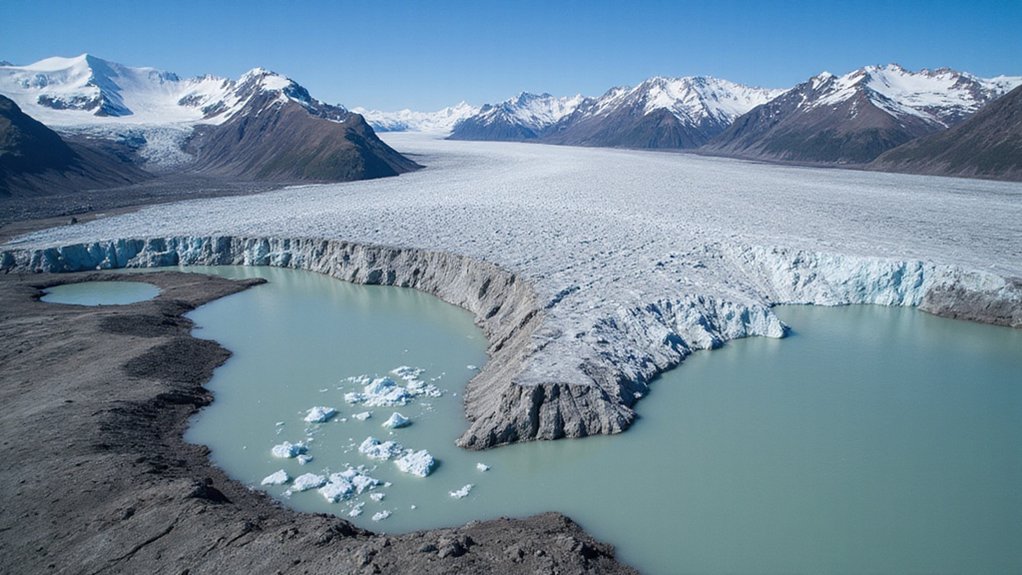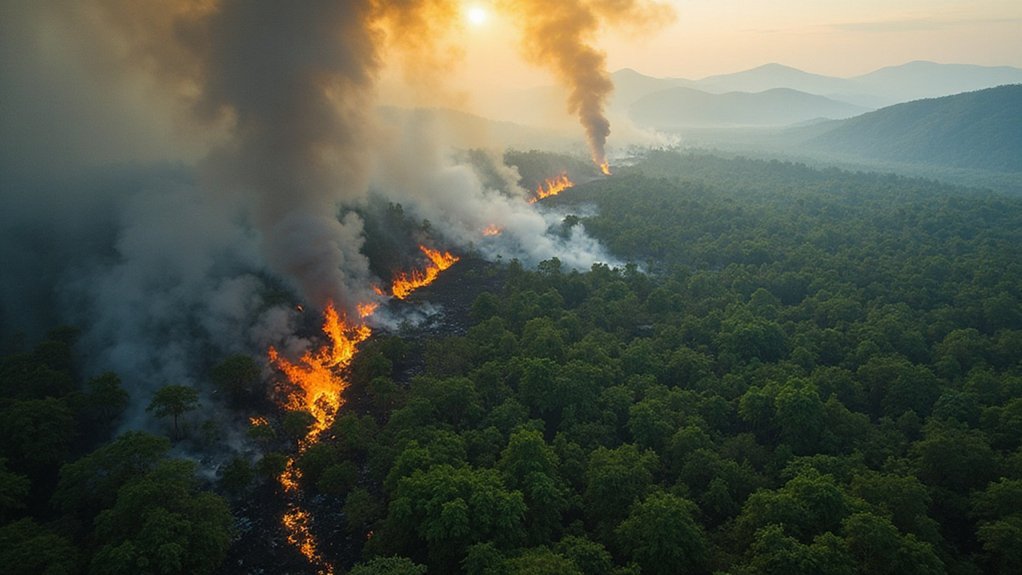During the Last Ice Age, humans survived in -6°C “death zones” through remarkable adaptation strategies. They migrated to warmer regions like Spain and Portugal, which served as survival hubs. Hunter-gatherers developed advanced tools for hunting large game while also gathering plants and fishing. Social networks proved essential as different groups shared resources, knowledge, and technologies. This collaborative approach helped our ancestors endure freezing conditions that covered 30% of Earth’s surface in ice. Their ingenious solutions reveal humanity’s extraordinary resilience.
As the world plunged into the last Ice Age about 25,000 years ago, early humans faced extreme challenges that threatened their very existence. Temperatures plummeted to -6°C in many regions, creating harsh “death zones” where survival seemed impossible. Up to 30% of Earth’s surface became covered in ice, drastically reducing habitable land and available resources.
Recent genetic research involving 356 prehistoric hunter-gatherers reveals how our ancestors adapted to these brutal conditions. The findings show that humans didn’t simply vanish—they moved. Many sought refuge in warmer regions like modern-day Spain and Portugal, which became essential survival hubs.
These Ice Age survivors were resourceful hunter-gatherers who constantly moved to find food. They created advanced tools to hunt large game such as mammoths and reindeer when available. When big animals were scarce, they quickly shifted to gathering plants, catching fish, and trapping smaller game.
The climate crisis caused a major population decline in regions like Italy, but southwestern Europe maintained genetic continuity for at least 20,000 years. These resilient groups contributed to the survival of the Gravettian culture, known for its distinctive tools and artistic expressions including the famous “Venus” figurines.
While Italy’s population dwindled during the Ice Age, southwestern Europe preserved genetic continuity, sustaining the artistic Gravettian culture for millennia.
Social networks proved fundamental for survival. Different groups shared resources, knowledge, and technologies across regions. These connections helped spread hunting techniques and survival strategies that allowed humans to endure the freezing conditions. Competition for resources often occurred among different human species coexisting during this period.
When the climate began warming rapidly around 14,000 years ago, human populations shifted again. After the Ice Age, genetic analysis revealed these survivors had dark skin and eyes, characteristics typical of the original Gravettian populations. Evidence shows that people from the Balkans migrated into Italy, replacing earlier inhabitants. Other groups with Near Eastern genetic ties moved back into Europe as the ice retreated.
The story of Ice Age survivors shows remarkable human adaptability. Despite facing temperatures that would kill most unprotected humans within hours, our ancestors developed the skills, tools, and social structures needed to thrive in one of Earth’s most challenging periods.








